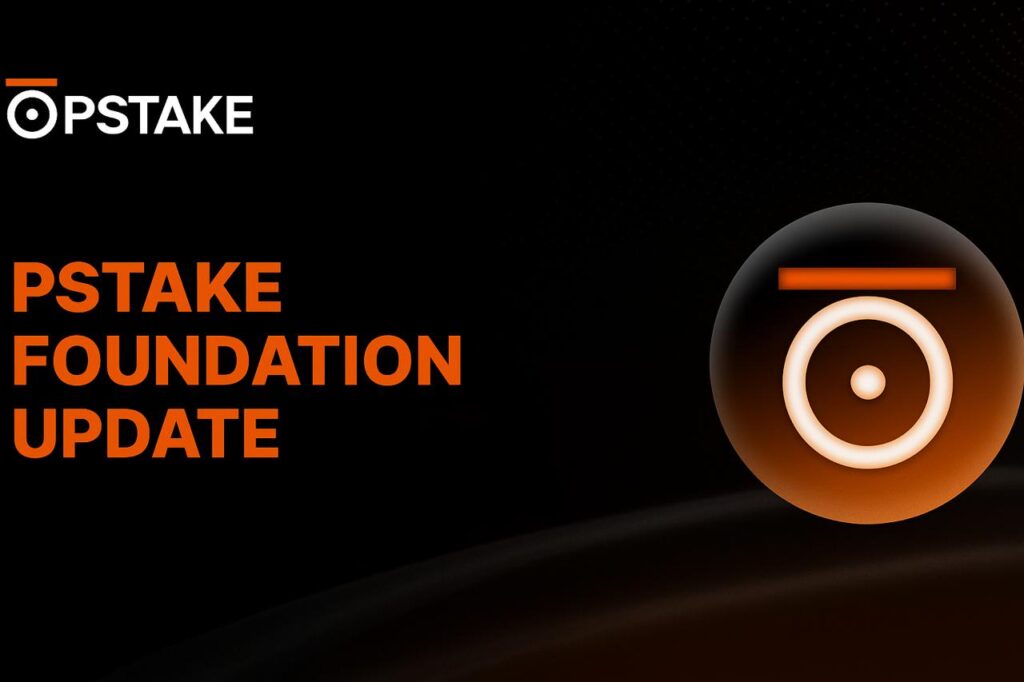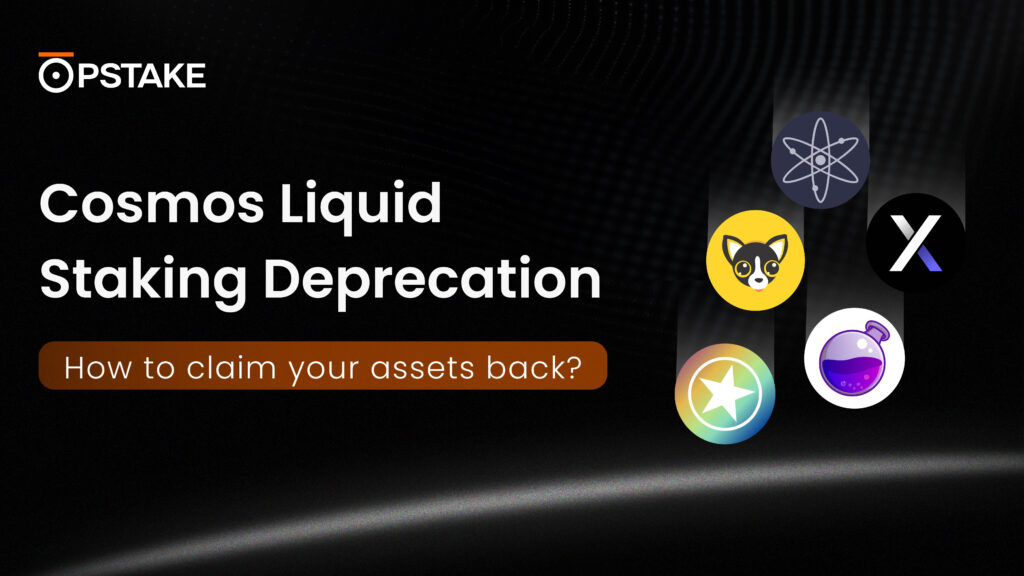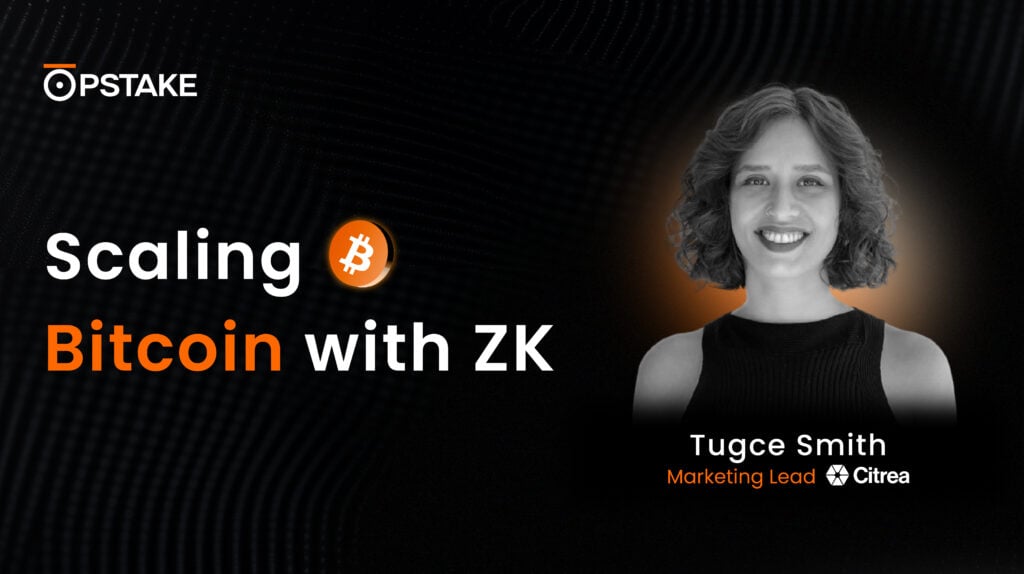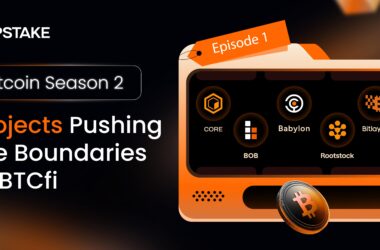Welcome to the 12th edition of our exciting new series, dubbed the ‘X Talks Bitcoin’ series. This is not just another industry discussion. It’s a unique opportunity for the pSTAKE community and Bitcoin enthusiasts to gain exclusive insights into Bitcoin, the emerging BTCfi industry, and potential yield-generating strategies.
Our series will feature expert opinions, providing invaluable insights into the future of Bitcoin and how we can all best position ourselves. These discussions are not just relevant but crucial to all our readers, offering a “not-to-be-missed” and “thought-provoking” perspective on what’s coming next for Bitcoin.
We spoke to ELi5 about BTCfi, Bitcoin Staking, and what does he think of the current Bitcoin ecosystem in the previous edition. Today Tugce Smith, Marketing Lead at Citrea shares her thoughts on Bitcoin programmability, zk Rollup, Bitcoin L2s/Sidechains and more.
1) Why is it important for the Bitcoin Network to scale and also have programmability?
For years, Bitcoin has faced a fundamental challenge: how to process more transactions and support diverse financial use cases without compromising its principles of decentralization, security, and censorship resistance. The difficulty of solving this challenge has left users with two choices: either keep Bitcoin as a store of value or take risks by using intermediaries to access broader financial activities.
This adoption path has resulted in relying on the “number go up” mentality and started to undermine Bitcoin’s role in decentralized finance. We need to remember that the more users rely on intermediaries for using Bitcoin in finance, the more the Bitcoin network itself is sidelined. Without an effective scalability solution, Bitcoin risks losing its relevance in decentralized finance and becoming obsolete as a network.
We believe that Bitcoin blockspace should be used to settle a variety of financial activities such as trustlessly buying BTC, leveraging BTC, or lending/borrowing BTC.
2) Citrea is described as Bitcoin’s first zk rollup. What does zk rollup on Bitcoin exactly mean?
Like any ZK rollup, a batch of transactions is executed off-chain and ZK proofs of this batch and the data that can restore the rollups’ state are submitted to Bitcoin. This way, a zk rollup can inherit Bitcoin’s data availability, reorg resistance and censorship resistance.
What sets a zk rollup on Bitcoin apart is how it achieves validity. Bitcoin’s limited block size and programmability make fully trustless zk rollups impossible under current conditions. However, with BitVM—a paradigm for enabling Turing-complete contracts on Bitcoin without altering its consensus rules—Citrea can optimistically verify ZK proofs on Bitcoin. This results in a trust-minimized approach (relying on “1 of N” assumptions), where Citrea builds a BitVM-based bridge called Clementine to enable zk rollups. Ultimate goal is to achieve trustless ZK rollups on Bitcoin, which requires certain opcodes. Until then, a ZK rollup on Bitcoin means 1 of N assumption for the BTC asset and full Bitcoin security for the rollup’s native assets and applications.
3) What are Citrea’s key differences compared to other Bitcoin L2s/sidechains today?
Citrea has two important value propositions that sidechains can’t offer.
- Citrea builds the safest and most trust-minimized way to use BTC via optimistically verifying zero-knowledge proofs on Bitcoin.
- Citrea opens Bitcoin blockspace to developers to build applications and issue assets that inherit full Bitcoin security.
Bitcoin has the most decentralized and censorship-resistant blockspace with the largest capital in blockchain history. The only meaningful way to scale Bitcoin and its native asset, BTC, is to preserve the core values that define Bitcoin while enhancing its expressivity and utility. This would mean to inherit Bitcoin’s data availability, reorg resistance, censorship resistance and validity. This is something that sidechains cannot do.
4) What is the most exciting thing in Citrea’s Roadmap for 2025?
The most exciting milestone for Citrea is definitely the mainnet. But on the road to mainnet, we’ll be able to showcase optimistically verifying Citrea proofs on Bitcoin testnet4. This is when users will see that BTC is actually becoming programmable. Additionally, Citrea is incubating selected developers to launch Citrea native applications. With Citrea Origins, we are supporting teams building on Citrea and building a fellowship of builders.
Expect to see Citrea going to mainnet with native applications.
About pSTAKE Finance
pSTAKE Finance is a Bitcoin Yield and Liquid Staking protocol, backed by Binance Labs.
With pSTAKE Finance, users can liquid stake BTC to get rewards from Babylon’s Trustless BTC staking for securing other app chains while maintaining their liquidity.
Accessing Bitcoin yields should not be complex, risky, or unsafe. With four years of liquid staking expertise and expert-curated yield strategies, pSTAKE Finance helps individuals and institutions put their BTC to work in BTCfi.
pSTAKE Finance has partnered with leading blockchain security firms, such as Halborn, Hexens, Oak Security, Immunefi, Forta, and more, to offer a secure liquid staking product suite.
PSTAKE is the governance and incentivization token of the pSTAKE Finance protocol. It has some of the most prominent investors, including Binance Labs, DeFiance Capital, Spartan Group, Coinbase Ventures, and Kraken Ventures.










